1.
Introduction
Differential equations with various types of fractional derivatives such as Caputo fractional derivative, Riemann-Liouville fractional derivative, are intensively studied theoretically and applied to varies models in the last decades. For example, they are successfully applied to study various types of neural networks (see, for example, [1,2,3]). Fractional differential equations with delays are rapidly developed. One of the main studied qualitative questions about fractional delay differential equation is the one about stability. In 1961, Dorato [4] introduced a concept of finite time stability (FTS). FTS is different from asymptotic stability. However, it is regarded as one of the core problems in delay systems from practical considerations. Later this type of stability has been applied to different types of differential equations. Recently, it is applied for Caputo delta fractional difference equations [5,6], for Caputo fractional differential equations [7] for -Hilfer fractional differential equation [8].
The investigations of the properties of the solutions of Riemann-Liouville (RL) fractional differential equations with delays are still at his initial stage. The asymptotic stability of the zero solution of the linear homogeneous differential system with Riemann-Liouville fractional derivative is studied in [9]. Li and Wang introduced the concept of a delayed Mittag-Leffler type matrix function, and then they presented the finite-time stability results by virtue of a delayed Mittag-Leffler type matrix in [10,11,12]. In connection with the presence of the bounded delay the initial condition is given on a whole finite interval called initial interval. In the above mentioned papers ([10,11,12]) the authors study the case when the lower limit of the RL fractional derivative coincides with the left side end of the initial interval. It changes the meaning of the initial condition in differential equations. In connection with this in the paper we set up an initial condition satisfying two main properties: first, it is similar to the initial condition in differential equations with ordinary derivatives and, second, the RL fractional condition is defined at the right side end of the initial interval which is connected with the presence of RL fractional derivative.
In this paper we study initial value problems for scalar nonlinear RL fractional differential equations with constant delays. Similarly to the case of ordinary derivative, the differential equation is given to the right of the initial time interval. It requires the lower bound of the RL fractional derivative to coincides with the right side end of the initial time interval. We present an integral representation of of the studied initial value problem. By the help of fractional generalization of Gronwall inequality we study the existence, continuous dependence and finite time stability of the scalar nonlinear RL fractional differential equations.
The main contributions of the current paper include:
(ⅰ) An appropriate initial value problem for nonlinear RL fractional differential equations is set up based on the idea of the initial time interval for delay differential equations with ordinary derivatives.
(ⅱ) A mild solution of the considered initial value problem is defined based on an appropriate integral representation of the solution.
(ⅲ) The existence, continuous dependence and finite time stability of the scalar nonlinear RL fractional differential equations is studied by the help of fractional generalization of Gronwall inequality.
The rest of this paper is organized as follows. In Section 2, some notations and preliminary lemmas are presented. In Section 3, main results are obtained. In Section 3.1. mild solution of the studied initial value problem is defined and some sufficient conditions by Banach contraction principle are obtained. In Section 3.2. continuous dependence on the initial functions is investigated based on the fractional extension of Gronwall inequality. In Section 3.3. some sufficient conditions for finite time stability are given.
2.
Preliminary notes
Let $ J = [-{\tau}, T] $, $ I = [0, T] $ where $ {\tau} > 0 $ is a constant, $ T < \infty $. Without loss of generality we can assume there exists a natural number $ N $ such that $ T = (N+1){\tau} $. Let $ L^{\it loc}_1(I, \mathbb{R}) $ be the linear space of all locally Lebesgue integrable functions $ m: I\to\mathbb{R} $, $ PC(J) = C([-{\tau}, 0), \mathbb{R})\cup C((0, T], \mathbb{R}) $.
Let $ x\in PC(J, \mathbb{R}) $. Denote $ ||x||_{J} = \sup_{t\in J} |x(t)| $.
In this paper we will use the following definitions for fractional derivatives and integrals:
$ - $ Riemann - Liouville fractional integral of order $ q\in(0, 1) $ ([13,14])
where $ \Gamma(.) $ is the Gamma function.
$ - $Riemann - Liouville fractional derivative of order $ q\in (0, 1) $ ([13,14])
We will give fractional integrals and RL fractional derivatives of some elementary functions which will be used later:
Proposition 1. The following equalities are true:
The definitions of the initial condition for fractional differential equations with RL-derivatives are based on the following result:
Proposition 2. (Lemma 3.2 [15]). Let $ q\in (0, 1) $, and $ m\in L^{\it loc}_1([0, T], \mathbb{R}) $.
(a) If there exists a.e. a limit $ \lim_{t\to 0+}[t^{q-1}m(t)] = c $, then there also exists a limit
(b) If there exists a.e. a limit $ _{0}I^{1-q}_tm(t)|_{t = 0} = b $ and if there exists the limit $ \lim_{t\to 0+}[t^{1-q}m(t)] $ then
We will use the Mittag - Leffler functions with one and with two parameters, respectively, (see, for example, [14]) given by $ E_{p}(z) = \sum_{j = 0}^\infty \frac{z^j}{\Gamma(jp+1)} $ and $ E_{p, q}(z) = \sum_{j = 0}^\infty \frac{z^j}{\Gamma(jp+q)} $.
Proposition 3. [16] (Gronwall fractional inequality) Suppose $ a(t) $ is a nonnegative function locally integrable on $ [0, T) $ (some $ T\leq \infty $) and $ b(t) $ is a nonnegative, nondecreasing continuous function defined on $ [0, T) $, $ b(t)\leq M $ (constant), and suppose $ u(t) $ is nonnegative and locally integrable on $ [0, T) $ with
Then
Recently, in [17] the non-homogeneous scalar linear Riemann-Liouville fractional differential equations with a constant delay :
with the initial conditions
where $ f\in C(\mathbb{R}_+, \mathbb{R}) $, $ g\in C([-{\tau}, 0], \mathbb{R}) $ was studied. It was proved the solution is given by the function
where $ E_{q, q}(z) = \sum_{i = 0}^\infty\frac{z^i}{\Gamma(iq+q)} $ and $ E_{q }(z) = \sum_{i = 0}^\infty\frac{z^i}{\Gamma(iq+1)} $ are Mittag-Leffler functions with two and one parameter, respectively.
Now, we will study the following nonlinear fractional delay differential equations
with the initial conditions (2.2), (2.3) where $ A, B\in \mathbb{R} $ are given constants, $ f:I\times\mathbb{R}\to \mathbb{R} $.
Remark 1. Note that in the case of the linear equation (2.1) we have formula (2.4) for the explicit solution since in the case of nonlinear equation (2.5) we are not able to obtain an explicit formula, we could provide only an integral presentation of the solution (see Example 1 and Example 2).
Example 1. Consider the special case of (2.1):
Then applying $ E_{q, q}(0) = \frac{1}{\Gamma(q)} $ we obtain the solution of (2.6):
3.
Main result
3.1. Existence of mild solutions of the IVP (2.5), (2.2), (2.3)
In connection with Remark 1 we will define a mild solution:
Definition 1. A function $ x\in PC(J, \mathbb{R}) $ is called a mild solution of the IVP (2.5), (2.2), (2.3) if it satisfies the following integral equation
Example 2. Consider the partial case of (2.5) (compare with (2.6):
Now similarly to Example 1 we are not able to obtain the exact solution of (2.6). But using Definition 1 we can consider the mild solution $ x(t) $ of the IVP (3.1) satisfying:
Examples 1 and 2 show the main difference between the linear RL fractional differential equations and the nonlinear RL fractional differential equations with a linear part.
We will introduce the following conditions:
(A1). The function $ f\in C([0, T]\times \mathbb{R}, \mathbb{R}) $ and there exists a function $ w\in C(I, \mathbb{R}_+) $ such that $ |f(t, x)|\leq w(t) $ for all $ t\in I, x\in \mathbb{R} $.
(A2). The function $ f\in C([0, T]\times \mathbb{R}, \mathbb{R}) $ and there exists a constant $ L > 0 $ such that $ |f(t, x)-f(t, y)|\leq L|x-y| $ for all $ t\in I, x, y\in \mathbb{R} $. First, we will consider the case of Lipschitz nonlinear function.
Theorem 1. Let $ A\not = 0 $, the condition (A2) be satisfied and
1. The function $ g\in C([{\tau}, 0], \mathbb{R} $ and $ |g(0)| < \infty $.
2. $ \rho = \frac{Lh_1+|B|h_2}{|A|} < 1 $ where $ h_1 = \max_{t\in [0, T]}|E_q(At^q)-1|, $
Then the the IVP (2.5), (2.2), (2.3) has a unique mild solution $ x\in PC(J, \mathbb{R}) $.
${{\rm{P\ r\ o\ o\ f:} }}$ Existence. Define the operator $ \Xi: PC(J, \mathbb{R})\to PC(J, \mathbb{R}) $ by the equality
Let $ z, y\in PC(J, \mathbb{R}) $. We will prove that
Let $ t\in(0, {\tau}] $. Then applying Definition 1 and the equality
we obtain
Let $ t\in({\tau}, 2{\tau}] $. Then according to Definition 1 and the equality
we have
Let $ t\in(2{\tau}, 3{\tau}] $. Then according to Definition 1 and the equalities
and
we have
Following the induction process and the definition of $ \rho $ we obtain that $ ||\Xi(z(t))-\Xi(y(t))||_J\leq \rho||z-y||_J. $ Therefore, the operator $ \Xi:PC(J, \mathbb{R})\to PC(J, \mathbb{R}) $ is a contraction.
Uniqueness. Let $ z(t), y(t) $ be two mild solutions of the IVP (2.5), (2.2), (2.3). Applying induction process w.r.t. the intervals and from condition 2 we obtain that $ ||z-y||_{(k{\tau}, (k+1){\tau}]} < \rho ||z-y||_{(k{\tau}, (k+1){\tau}]} $ for $ k = 0, 1, \dots, N $ which proves the uniqueness.
Remark 2. It is obvious that the condition $ A\not = 0 $ in Theorem 1 is not a restriction because the nonzero term $ Ax $ could be added to the nonlinear part without losing the Lipschitz property.
Example 3. Consider the IVP (3.1) In this case $ A = 0.1, f(t, x) = \sin(x)-0.1x, B = 1 $. Then the condition (A2) is satisfied with $ L = 1.1 $ but the condition 2 of Theorem 1 is not satisfied.
Now, we change the equation in the IVP (3.1) to $ \ _{0}^{RL}D_t^{0.5}x(t) = 0.1x(t-1)+0.01\sin(x(t)) $. In this case $ A = 0.1, f(t, x) = 0.01\sin(x)-0.1x, B = 0.1 $, $ h_1 = h_2 = 0.43581 $ and $ \rho = \frac{(0.11+0.1)0.43581}{0.1} < 1 $. According to Theorem the IVP (3.1) has unique mild solution which is satisfying the integral presentation given in Definition 1.
In the case of a bounded nonlinear function we have the following result:
Theorem 2. Let the condition (A1) be satisfied and
1. The function $ g\in C([{\tau}, 0], \mathbb{R} $ and $ |g(0)| < \infty $.
2. $ \rho = \frac{2||w||_Ih_1+|B|h_2}{|A|} < 1 $ where $ h_1 $ and $ h_2 $ are defined in Theorem 1.
Then the the IVP (2.5), (2.2), (2.3) has a unique solution $ x\in PC(J, \mathbb{R}) $.
The proof of Theorem 2 is similar to the one of Theorem 1 and we omit it.
3.2. Continuous dependence on the initial functions
We will study the continuous dependence of mild solutions of the IVP (2.5), (2.2), (2.3) on the initial functions.
Consider IVP (2.5), (2.2), (2.3) and the RL fractional equation (2.5) with initial conditions
Theorem 3. Let the following conditions be satisfied:
1. The functions $ g, p\in C([-{\tau}, 0], \mathbb{R} $, $ |g(0)| < \infty $, $ |p(0)| < \infty $.
2. The function $ f\in C([0, T]\times \mathbb{R}, \mathbb{R}) $ and it is Lipschitz with a constant $ L > 0 $ on $ [0, T]\times \mathbb{R} $.
Then for any number $ \delta > 0 $ there exist numbers $ K_k, C_k > 0, \ k = 0, 1, 2, \dots, N $ such that the inequality $ ||g-p||_{[-{\tau}, 0]} < \delta $ implies
where $ x(t), y(t) $ are mild solutions of the IVPs (2.5), (2.2), (2.3) and (2.5), (3.11), (3.12) respectively.
${{\rm{P\ r\ o\ o\ f:} }}$ We will use the induction w.r.t. the intervals to prove the claim.
Let $ M = \sup_{t\in J}|E_{q, q}(At^q)|. $
Let $ t\in(0, {\tau}] $. Then from Definition 1 and Eq. (3.4) we get
where $ P_0 = M\frac{|B|{\tau}^q}{q} $.
According to Proposition 3, the inequality $ \int_0^t (t-s)^{n q-1} s^{q-1} ds = \frac{t^{nq+q-1}\; \Gamma(q) \Gamma(nq)}{\Gamma(nq+q)} $ we obtain
where $ K_0 = M \Gamma(q) E_{q, q}(ML\Gamma(q){\tau}^{q}) $, $ C_0 = M\frac{|B|{\tau}^q}{q} E_q(ML\Gamma(q){\tau}^{ q }) $.
Let $ t\in({\tau}, 2{\tau}] $. Then applying Definition 1, (3.15), the inequalities $ \int_0^{\tau} ({\tau}-s)^{q-1} s^{q-1} ds = \frac{{\tau}^{2q-1} \Gamma(q) \Gamma(q)}{\Gamma(2q)} $, $ \frac{q \Gamma^2(q)}{\Gamma(2q)}\leq 2 $ we get
where $ P_1 = M{\tau}^{q-1} +|B|MC_0\frac{{\tau}^q}{q}+|B| M\frac{({\tau})^q}{q} +LMK_0 \frac{{\tau}^{2q-1} \Gamma(q) \Gamma(q)}{\Gamma(2q)}. $
According to Proposition 3 we obtain
where $ K_1 = 2|B|M^2\Gamma^2(q) E_{q, q}^2(ML\Gamma(q){\tau}^{q}) \frac{ {\tau}^q }{q} $ and $ C_1 = P_1E_q(ML\Gamma(q){\tau}^q) $.
Let $ t\in(2{\tau}, 3{\tau}] $. Then applying Definition 1 and (3.6) we get
where $ Beta[x, q, q] $ is the incomplete beta function.
According to Proposition 3 we obtain
where $ K_2 = \delta |B|MK_1 \frac{{\tau}^{q}\Gamma^3(q)}{\Gamma(2 q)} E_{q, q}(ML\Gamma(q)(t-2 {\tau})^{ q}) $ and $ C_2 = \delta P_2 E_q(ML\Gamma(q)({\tau})^{q}). $
Continue the induction process we prove the claim.
Corollary 1. Let the conditions of Theorem 3 be satisfied and $ q > 0.5 $.
Then for any positive numbers $ \delta, {\varepsilon}: \ {\varepsilon} < {\tau} $ there exists a number $ K, C > 0 $ such that the inequality $ ||g-p||_{[-{\tau}, 0]} < \delta $ implies
where $ x(t), y(t) $ are mild solutions of the IVPs (2.5), (2.2), (2.3) and (2.5), (3.11), (3.12) respectively.
${{\rm{P\ r\ o\ o\ f:} }}$ The proof is similar to the one of Theorem 3 applying the inequality $ \frac{(t-k{\tau})^{2q-1}}{q}\leq \frac{{\tau}^q}{q} $ for $ t\in(k{\tau}, (k+1){\tau}], \ k = 0, 1, \dots, N $.
3.3. Finite time stability
In this section we will define and study the finite time stability of mild solutions of the IVP for Riemann-Liouville (2.5), (2.2), (2.3).
Note that because of the singularity of $ t^{q-1} $ at 0, we could prove the FTS on an interval which does not contain 0.
Theorem 4. Let the function $ g\in C([{\tau}, 0], \mathbb{R} $, $ |g(0)| < \infty $, $ q > 0.5 $ and the condition (A1) be satisfied.
Then for any real positive numbers $ \delta, {\varepsilon}:\ {\varepsilon} < {\tau} $ there exists a number $ K $ depending on $ \delta $ and $ {\varepsilon} $ such that the inequality $ ||g||_{[-{\tau}, 0]} < \delta $ implies $ |x(t)| < K $ for $ t\in ({\varepsilon}, T] $ where $ x(t) $ is the mild solution of the IVP (2.5), (2.2), (2.3).
${{\rm{P\ r\ o\ o\ f:} }}$ Let $ ||g||_{[-{\tau}, 0]} < \delta $ and $ M = \sup_{t\in J}|E_{q, q}(At^q)|. $
Let $ t\in(0, {\tau}] $. Then according to Definition 1 we have
From (3.19) it follows that
Let $ t\in({\tau}, 2{\tau}] $. Then we have
Let $ t\in(2{\tau}, 3{\tau}] $. Then we have
Let $ t\in(3{\tau}, 4{\tau}] $. Then we have
Following the induction process we prove the claim with $ K = \delta M(N{\tau})^{q-1}+| M (|w||_I +|B|\delta)\frac{(N{\tau})^q}{q}+ |B| M\Big(\delta M\frac{{\tau}^{2q-1}}{2q-1}+M(|B|\delta +||w||_I)(\frac{{\tau}^q}{q})^2 \Big)+ |B| M\frac{{\tau}}{q}\sum_{i = 1}^{N}K_i $.
In the case the nonlinear Lipschitz functions we obtain the following result:
Theorem 5. Let the function $ g\in C([{\tau}, 0], \mathbb{R} $, $ |g(0)| < \infty $, $ q > 0.5 $ and the condition (A2) be satisfied.
Then for any real positive numbers $ \delta, {\varepsilon}:\ {\varepsilon} < {\tau} $ there exists a number $ K $ depending on $ \delta $ and $ {\varepsilon} $ such that the inequality $ ||g||_{[-{\tau}, 0]} < \delta $ implies $ |x(t)| < K $ for $ t\in ({\varepsilon}, T] $ where $ x(t) $ is the mild solution of the IVP (2.5), (2.2), (2.3).
${{\rm{P\ r\ o\ o\ f:} }}$ According to Theorem 1 the the IVP (2.5), (2.2), (2.3) has a unique solution $ x\in PC(J, \mathbb{R}) $. Let $ ||g||_{[-{\tau}, 0]} < \delta $ and $ M = \sup_{t\in J}|E_{q, q}(At^q)|. $
Let $ t\in({\varepsilon}, {\tau}] $. Then according to Definition 1 we have
From (3.21) and Proposition 3 it follows that
Therefore,
Let $ t\in({\tau}, 2{\tau}] $. Then from (3.23) we have
From (3.24) and Proposition 3 it follows that
Therefore,
Following the induction process we obtain
where $ K_k = \Big(M {\varepsilon}^{q-1}\Gamma(q)+|B|M(1+K_{k-1})\frac{{\tau}^q}{q}\Big)E_q(LM\Gamma(q)){\tau}^q), \ k = 1, 2, \dots, N $.
Example 4. Consider the IVP (3.1) with RL fractional equation $ \ _{0}^{RL}D_t^{0.5}x(t) = 0.1x(t-1)+0.01\sin(x(t)) $. According to Example 3 it has unique mild solution $ x(t) $ which is satisfying the integral presentation given in Definition 1. Also, according to Theorem 5 for $ \delta = 1 $, $ {\varepsilon} = 0.001 $ the inequality $ |x(t)| < K $ holds for $ t\in[0.001, 3] $ where $ M = sup_{[0, 3]}E_{0.5, 0.5}(0.1t^{0.5}) = 0.7772 $, $ K_0 = \Big(0.7772* 0.001^{0.5-1}\Gamma(0.5)+0.1 * 0.7772\frac{1}{0.5}\Big)E_q(0.11 *0.7772\Gamma(0.5)) = 52.321 $, $ K_1 = 62.0518 $ and $ K = K_2 = 63.8615 $.
4.
Conclusions
We study scalar nonlinear RL fractional differential equations with constant delays. An appropriate initial value problem for studd equations is set up based on the idea of the initial time interval for delay differential equations with ordinary derivatives. A mild solution is defined based on an appropriate integral representation of the solution. The existence, continuous dependence and finite time stability of the scalar nonlinear RL fractional differential equations is studied by the help of fractional generalization of Gronwall inequality. The obtained integral representations could be successfully applied to study many qualitative investigation of the properties of the solutions of nonlinear RL fractional differential equations.
Acknowledgments
Research was partially supported by Fund Scientific Research MU19-FMI-009, Plovdiv University.
Conflict of interest
All authors declare no conflicts of interest in this paper.











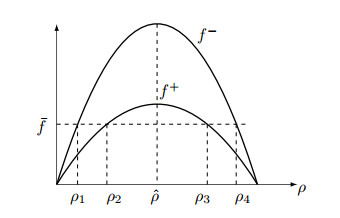
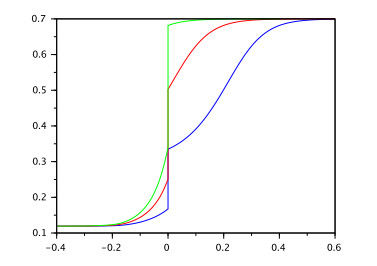

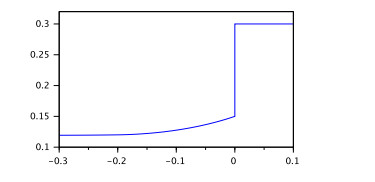



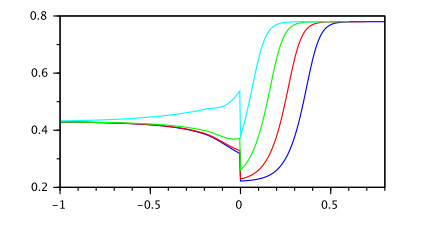





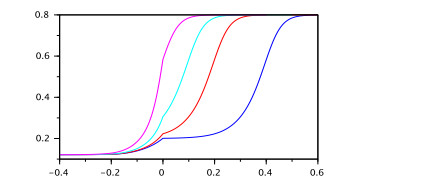

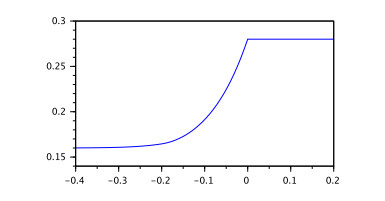



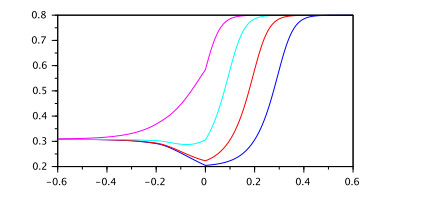

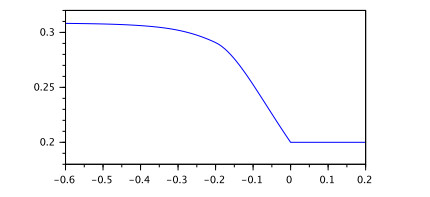




 DownLoad:
DownLoad: